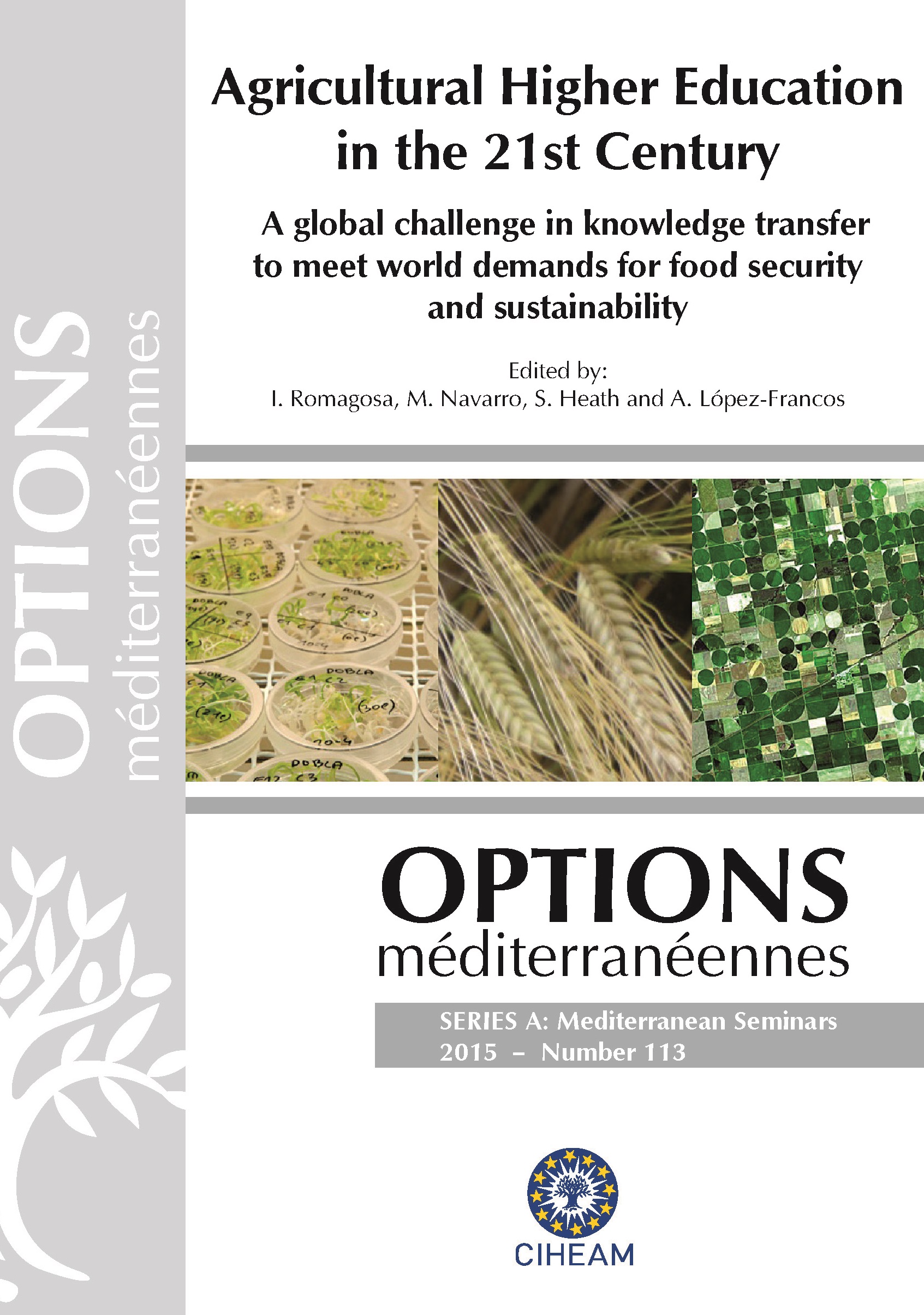| Article précédent | p. 43-56 | Article suivant |
Agricultural Higher Education in the 21st Century. Student view: attractiveness and employability
By the year 2050, an enormous increase in food production is needed to sustain global food security. Because the students of today will be the professionals of 2050, it is extremely important that a sufficient number of students is being educated to realize this increasing food demand. However, the problem is that currently too few students are interested in studying the field of agriculture and related sciences. In this paper, the reasons for this low interest are analysed on the basis of answers given in interviews with agriculture related students from all over the world. It seems that the current image of agriculture in developed regions is one of the obstacles in attracting enough students. Improving society’s awareness on the role of agriculture in our daily lives can greatly improve the image of the sector in general and therefore the amount of students choosing this particular field of study. Other possible reasons for low interest in the study like the quality of the study, the extra-curricular opportunities and the career perspective after graduation were analysed as well. They were found to be positive compared to other careers. Something that most students that are at the point of choosing their study have no idea of. Improving the marketing of these positive aspects is a way to improve the number of students applying for a study in the field of agriculture or any related science.
À l’horizon 2050, une augmentation énorme de la production d’aliments sera nécessaire pour assurer la sécurité alimentaire mondiale. Vu que les étudiants d’aujourd’hui seront les professionnels de demain, il est d’une extrême importance d’en former un nombre suffisant dans ce domaine afin de palier au mieux à la demande alimentaire mondiale. Le problème est qu’actuellement le nombre d’étudiants intéressés par des études dans le domaine agricole et des sciences connexes est trop petit. Dans cet article les raisons à ce manque d’intérêt sont analysées en se basant sur des réponses données lors d’entretiens avec des étudiants des filières agricoles de par le monde. Il semble que l’image qu’a actuellement agriculture dans les régions développées du globe soit un réel frein à l’adoption de ces études. Promouvoir l’agriculture au sens large et sensibiliser la société au rôle qu’a l’agriculture dans nos vies quotidiennes pourrait améliorer fortement l’image du secteur et permettrait par conséquent d’augmenter le nombre d’étudiants choisissant des études dans ce domaine. D’autres raisons probables à ce manque d’intérêt ont également été analysées, telles que la qualité de l’enseignement, les opportunités extra-universitaires et les perspectives de carrière une fois les études achevées. Celles-ci se sont avérées bonnes comparées à celles d’autres filières, mais c’est quelque chose qui n’est pas perçu par la plupart des étudiants sur le point de choisir leurs études. Améliorer le marketing de ces aspects positifs serait une manière d’augmenter le nombre d’étudiants posant leur candidature pour une formation dans le domaine de l’agriculture ou de toute autre science connexe.
- [ Afficher ]
- [ Télécharger ]
- [ Exporter la citation ]
Vous pouvez télécharger la citation au format :
- [ Imprimer ]
-
Mots-clés
AGRICULTURECiter cet article
Meulendijks L. Agricultural Higher Education in the 21st Century. Student view: attractiveness and employability. In : Romagosa I. (ed.), Navarro M. (ed.), Heath S. (ed.), López-Francos A. (ed.). Agricultural higher education in the 21st century : a global challenge in knowledge transfer to meet world demands for food security and sustainability . Zaragoza : CIHEAM, 2015. p. 43-56. (Options Méditerranéennes : Série A. Séminaires Méditerranéens; n. 113). International Conference : Agricultural Higher Education in the 21st Century, 2015/06/15-17, Zaragoza (Spain). http://om.ciheam.org/om/pdf/a113/00007596.pdf



